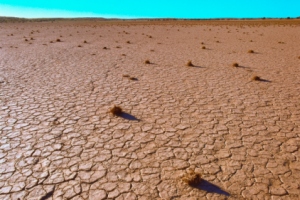 Water shortage is fast becoming one of the biggest crises of this century. In developed countries, where water is easily available, many people take it for granted. Carbon Disclosure Project (CDP) Water Disclosure Account Manager, Chris Hedemann, believes that when people are spared from having to obtain and treat water, it’s easy to forget how valuable water is, and it’s routinely undervalued and wasted. “You turn on the tap and it comes out. If you don’t want it, it goes down the drain.”
Water shortage is fast becoming one of the biggest crises of this century. In developed countries, where water is easily available, many people take it for granted. Carbon Disclosure Project (CDP) Water Disclosure Account Manager, Chris Hedemann, believes that when people are spared from having to obtain and treat water, it’s easy to forget how valuable water is, and it’s routinely undervalued and wasted. “You turn on the tap and it comes out. If you don’t want it, it goes down the drain.”
Water could arguably be considered the most precious of our irreplaceable natural resources since it is essential for human, animal, agricultural and business life and growth.
Water and business
A new report from the Carbon Disclosure Project, CDP Water Disclosure Global Report 2011: Raising corporate awareness of global water issues presents water findings from 190 companies around the world.
In 2009, SABMiller and the World Wildlife Fund released the report, Water Footprinting: Identifying and Addressing Water Risks in the Value Chain detailing their method for measuring water consumption.
Many businesses are only realizing in the past few years how important it is to track their water consumption and be aware of the impact water, or lack of it, could have on their business, even though 38 percent of respondents to the CDP Water project reported having water-related business impacts in the past five years. Fifty-nine percent reported a significant water-related risk to their business.
When a factory experiences a water shortage and is shut down for a day, there is a significant loss of revenue. If a supplier experiences a drought or flood, materials may not arrive or the price might go up. In 2011, Thailand experienced serious flooding, and as a result, Honda was not able to get parts they needed for their cars, causing their third quarter earnings to plummet. In 2011, Pakistan also experienced extreme weather that impacted their cotton crop, causing prices to skyrocket and H&M took a financial hit when it had to pay a premium for an essential material.
“Water is so essential for economic recovery because you have to know about the essential risks and opportunities for your business if you want to have a business in a sensitive economic climate,” Hedemann says.
Making investors nervous
Businesses that are not taking steps to measure their consumption and look ahead to plan for water shortages are taking a huge risk, and it’s not going unnoticed.
Jonas Kron, an investment advisor at Trillium Asset Management (a mutual fund with nearly $1 billion in assets that specializes in sustainability-related investments), told Bloomberg in January 2012 that analysts were keeping an eye on the world’s dwindling supply of fresh water, and it could soon impact companies the fund invests in.
Kron said that companies like J.M. Smucker (makers of jelly and Folger’s coffee, among other products) have not demonstrated any preplanning efforts to prepare for water-related issues, which will become inevitable as climate change affects the world’s coffee-growing regions. Investors have been urging the company to factor water risk in its supply chain into its financial projections, but to no avail.
Other companies could find their investors showing similar qualms if they ignore water and climate change issues. In January 2012, more than 450 global investors who control tens of trillions in assets gathered for the Investor Summit on Climate Risk and Energy Solutions. Ceres senior manager, Brooke Barton, told Bloomberg that “most companies act as if the water they have today will be there tomorrow. Water is something that should be keeping CEOs up at night.”
Ceres president, Mindy S. Lubber, wrote in Forbes: Companies often point to investors as a reason why they’re not doing more on sustainability. “We’d like to do more … but mainstream investors just don’t care about it,” is the common refrain according to a survey by Accenture on CEO attitudes. That’s starting to change. At a recent Wall Street meeting of 100 investor members of the $10 trillion Investors Network on Climate Risk, sustainability leadership was the buzz.
From the inside out
Climate change has finally made it into the boardroom as a topic of discussion and a business concern, but water remains out in the corridor, even though in many cases the two are intertwined.
Hedemann believes it’s due to the fact that climate change is a global issue with countries and governments coming together to work to mitigate that problem, while water remains a regional problem. He predicts that as water becomes a bigger problem worldwide, it will finally get a place at the boardroom table.
Although businesses are recognizing that water is an issue and have taken steps to measure and mitigate their internal water use, only a few have gone forward and addressed their supply chains, which pose the biggest risk. It’s easier to begin by measuring internal processes (just as with carbon), but the consequences of not assessing supply chain risks can be significant.
Water conservation as a business opportunity
Some companies in the CDP report have capitalized on the importance of water. BASF has staked a large portion of its business on helping other businesses manage and treat their water. BASF “helps to protect water quality by implementing and supporting programs such as water monitoring, farmer training, knowledge transfer, and cooperation with other partners involved in water protection and distribution.”
Unilever offers Pureit – an affordable in-home water purifier that makes water ‘as safe as boiled’ without needing electricity or pressurized tap water. It has already made clean drinking water available to over 25 million consumers and aims to reach 500 million people worldwide by 2020.
By identifying their own risk and managing it, still other companies have used that knowledge to gain an edge. Anglo American says, “Using water more efficiently will enable us to do business in areas that may not be viable for other businesses and make us the partner of choice for local communities and governments who insist on responsible water use.”
The battle between water and energy: it’s all about context
In many cases, water and energy conservation can complement each other, but other times they are at odds.
Johnson Controls has developed a heat and power plant in Baltimore that uses treated wastewater for fuel. The plant will generate 2.4 megawatts of electricity annually and reduce the city’s energy bill by $1.4 million each year. Woolworths Limited invested in refrigeration and air conditioning systems at two distribution centers that utilize rainwater harvesting, and saved both energy and water (16.4 million liters) in 2010.
However, solutions like desalination plants, which increase water supply, use excessive amounts of electricity. Nestle found that creating biofuels out of corn and wheat is an extremely water-intensive process, so it advises against using these crops for fuel when they could better be used for food.
When energy and water are at cross purposes, Hedemann says often it’s a matter of context. A desalination plant, although it demands high amount of energy, is still a good choice for a drought-prone area, while a case could be made for an energy-efficient/water-intensive solution in a water-abundant region.
No More Excuses
Businesses no longer can claim that they didn’t expect a severe weather event or realized that a region where they do business was experiencing a drought or heavy rainfall, Hedemann says. The time for examination and preparation is now. Businesses need to spend time identifying their weaknesses and at least be aware of their vulnerabilities, if not planning how to strengthen them.
Companies in the CDP Water Disclosure report are preparing for potential water issues in different ways.
• H&M is participating in the global Better Cotton Initiative to educate cotton farmers on more sustainable farming practices to build resilience into their supply chain and hedge against future weather-related delays and price jumps.
• The Southern Company reported US$200 million in costs when the company was forced to consume extra electricity in lieu of hydroelectricity during drought conditions. For the future, the company has invested in a diverse energy portfolio and created storage ponds at key facilities, and is working closely with government agencies to plan contingencies for drought conditions.
• Cisco Systems worked with its printed circuit board assembly partners to implement a new soldering practice that eliminated the water-intensive wash stage of the manufacturing process. By 2010, this new practice had been implemented company-wide, saving the company over US$1 million each year with no adverse impact on product quality.
• Colgate Palmolive improved a cleaning process at a manufacturing site in South Africa that saves 388,000 liters of water annually and with its reduced downtime, produces an additional two tons of product daily.
Written by Andrea Newell for Sustainable Industries magazine.
Do you grasp the risk of water scarcity?




